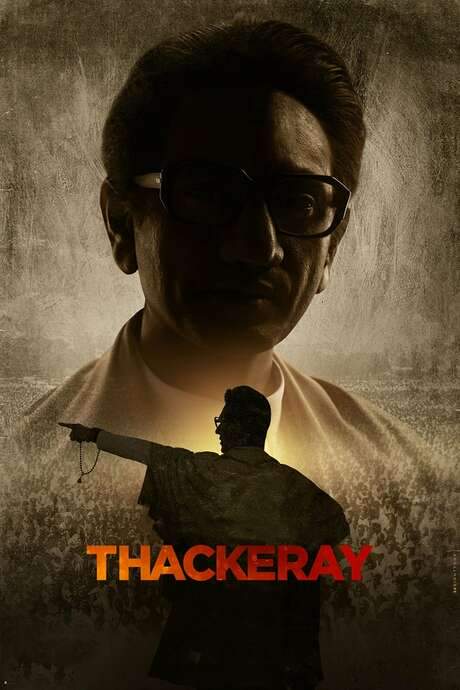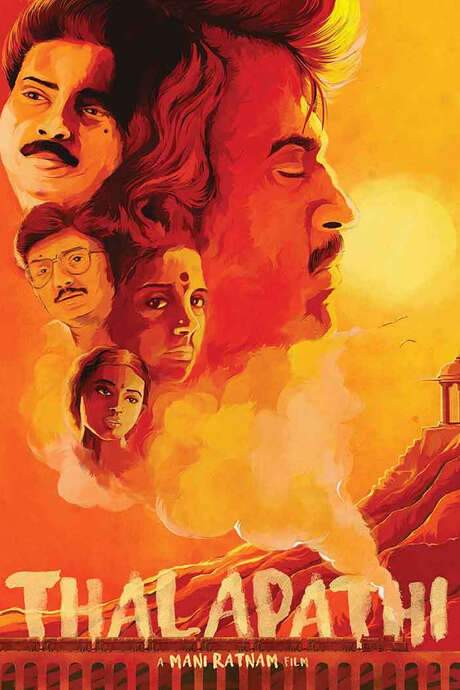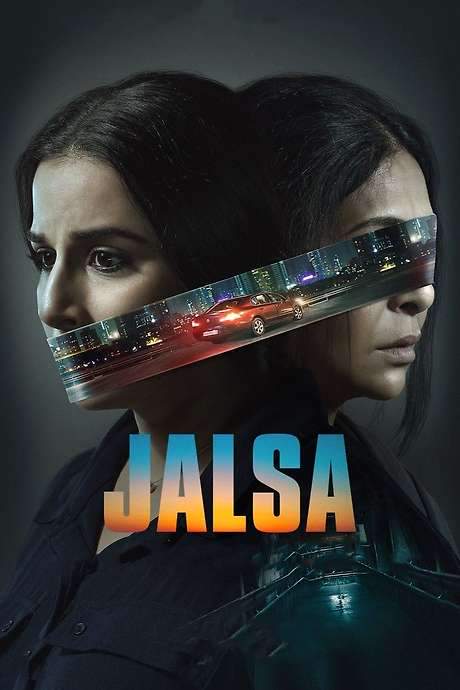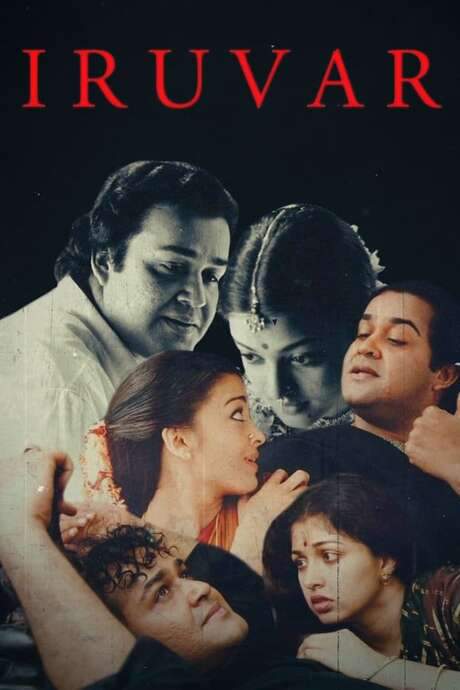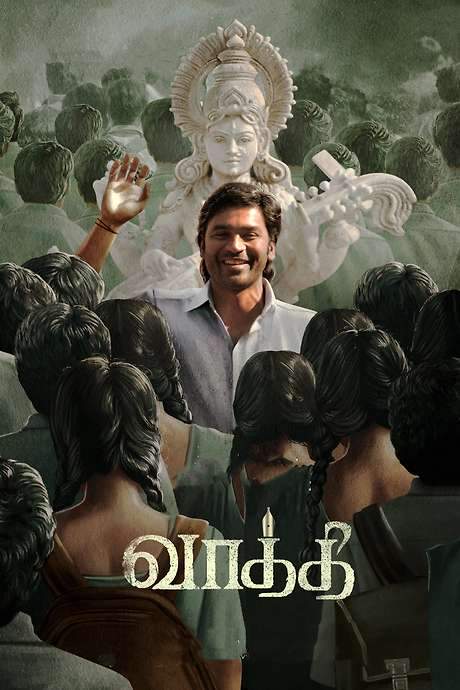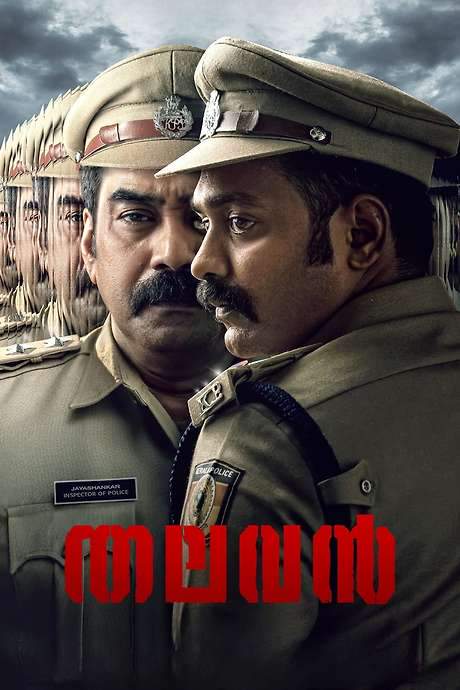
Thalaivii
This biographical drama explores the life of J. Jayalalitha, a celebrated actor who rose to become Chief Minister of Tamil Nadu. The film chronicles her journey, detailing the complex relationships and challenges she faced as she navigated a rapid ascent to political power, ultimately serving five terms as Chief Minister. It portrays a compelling portrait of a woman who left an indelible mark on Indian politics.
Warning: spoilers below!
Haven’t seen Thalaivii yet? This summary contains major spoilers. Bookmark the page, watch the movie, and come back for the full breakdown. If you're ready, scroll on and relive the story!
Thalaivii (2021) – Full Plot Summary & Ending Explained
Read the complete plot breakdown of Thalaivii (2021), including all key story events, major twists, and the ending explained in detail. Discover what really happened—and what it all means.
This biographical drama traces the life of Jaya, a determined public figure who rises from the shadows of cinema to lead Tamil Nadu’s political landscape. The narrative unfolds through two interwoven arcs that span decades, offering a nuanced portrait of ambition, public service, personal sacrifice, and the weight of public perception. On one hand, the film revisits the late-1960s and early-1980s cinema world where a star’s image can shape a nation; on the other, it follows the gritty, high-stakes arena of state politics, where every move invites scrutiny, praise, or backlash. At the center is a woman who navigates pressure from her family, her admirers, and rival parties, all while trying to stay true to her ideals and her people.
The 1965 arc begins in a moment when [Jaya] is still a young entrant in a film industry buzzing with larger-than-life personalities. Her mother, [Sandhya], an actress of the older generation, pushes her toward acting, and she steps into the spotlight by replacing another performer. The experience exposes her to the complexities of fame, public scrutiny, and the ethical lines that surround on-set relationships. The industry’s leading figure, [MGR], looms large as both a mentor and a political symbol—the public’s beloved “god” whose choices influence the tides of cinema and politics alike. In this tension between stardom and responsibility, [Saroja] emerges—a character who will become a touchstone in Jaya’s evolving view of loyalty, influence, and the roles women play in shaping public life. When Veerappan, a powerful adversary, tries to challenge Jaya, she uses wit and resilience to push back, signaling the beginning of a public figure who negotiates danger with poise. The film also shows Veerappan’s attempts to control the narrative by casting a rival talisman in a key project and offering settlements to reel her away from her on-screen partnership with MGR, a move that tests Jaya’s resolve and the loyalty she garners from her collaborators.
As the story moves forward, the personal and political spheres collide in her relationship with the cinema icon [MGR], who transitions from a film powerhouse to a political heavyweight. The plot delves into the moment when MGR shifts his focus from the screen to the campaign trail, a decision that dramatically reshapes Jaya’s own ambitions. The couple’s bond is tested by professional pressures, public speculation, and the heartbreak of personal loss—most notably the death of MGR’s wife, [Janaki Ramachandran], a tragedy that reverberates through the party and alters the balance of power within AIADMK. The film portrays how Jaya’s affection and respect for MGR evolve into a deeper sense of responsibility toward the people he sought to serve, while also highlighting the emotional toll of living in a world where every gesture is interpreted through a political lens.
The arc also sheds light on the broader cultural and social work that surrounds Jaya’s rise. A pivotal moment occurs when she embraces educational reform, transforming the Midday Meal program into a tangible lifeline for children and families. The program becomes a symbol of her commitment to public welfare and an emblem of the partnership she sustains with MGR as they work to improve the state’s schools and infrastructure. Jaya’s outreach extends beyond the capitol as she connects with communities in rural and urban areas, spreading a message of empowerment and opportunity. The public comes to see her as a champion of education, a voice for the underrepresented, and a symbol of resilience under pressure.
The political landscape shifts as elections approach. A crucial challenge arises when the opposition attacks her leadership and paints the party as unstable under her influence. In a rousing response, Jaya demonstrates political acumen and rhetorical skill, gaining sympathy and admiration from many who see in her a new kind of leadership. Her ascent is marked by a series of strategic moves—serving as a Member of Parliament, engaging with national leaders, and pushing for policy reforms that touch on education, healthcare, and social welfare. A landmark moment occurs when she speaks in important sessions of the Rajya Sabha, articulating South India’s concerns and highlighting the need for balanced development in national plans. Her presence earns respect from peers and opponents alike, even as she navigates the delicate balance between loyalty to MGR’s legacy and her own independent political path.
The narrative then shifts to the tumultuous period following MGR’s tenure, when the AIADMK party faces internal divisions after his passing. A factional split emerges, and former allies must decide which path to follow—one that honors MGR’s vision through a continued coalition or one that tests the party’s unity under new leadership. Across this upheaval, Jaya’s capacity to maintain focus on education and social programs becomes a unifying thread for her supporters, even as the party grapples with factional rivalries and the long shadow of national politics. The story also touches on the broader national context, including the assassination of Rajiv Gandhi, which disrupts the political climate and reshapes campaign strategies across the country. Through it all, Jaya remains a central figure whose decisions are interpreted as a barometer of public sentiment and a testament to the power of grassroots outreach.
The film culminates in a return to the heart of Jaya’s mission: governance grounded in service. In the wake of adversity, she emerges as a leader who steadies her party and uses the levers of power to advance education, welfare, and women’s participation in public life. The narrative emphasizes her perseverance in the face of personal trials, political setbacks, and the relentless gaze of the public—an examination of how courage and compassion can inform political strategy and social change. By the end, Jaya’s leadership is portrayed as less about personal glory and more about the enduring goal of uplifting communities, uplifting lives, and sustaining momentum for a state that often sits at the center of national attention. The film closes on a note of resolve: the people she serves remain the measure of her work, and the movement she helps sustain continues to influence Tamil Nadu’s political and social landscape.
This portrait blends intimate moments—family, mentorship, and the pressures of fame—with sweeping scenes of political maneuvering, public policy, and mass mobilization. It offers a respectful, human-facing look at a figure whose fame grew into a formidable public office, while acknowledging the complexities and costs that accompany a life spent in the limelight and in service to others.
Last Updated: October 01, 2025 at 12:51
Unlock the Full Story of Thalaivii
Don't stop at just watching — explore Thalaivii in full detail. From the complete plot summary and scene-by-scene timeline to character breakdowns, thematic analysis, and a deep dive into the ending — every page helps you truly understand what Thalaivii is all about. Plus, discover what's next after the movie.
Thalaivii Timeline
Track the full timeline of Thalaivii with every major event arranged chronologically. Perfect for decoding non-linear storytelling, flashbacks, or parallel narratives with a clear scene-by-scene breakdown.

Characters, Settings & Themes in Thalaivii
Discover the characters, locations, and core themes that shape Thalaivii. Get insights into symbolic elements, setting significance, and deeper narrative meaning — ideal for thematic analysis and movie breakdowns.

Similar Movies to Thalaivii
Discover movies like Thalaivii that share similar genres, themes, and storytelling elements. Whether you’re drawn to the atmosphere, character arcs, or plot structure, these curated recommendations will help you explore more films you’ll love.
Explore More About Movie Thalaivii
Thalaivii (2021) Scene-by-Scene Movie Timeline
Thalaivii (2021) Movie Characters, Themes & Settings
Thalaivii (2021) Spoiler-Free Summary & Key Flow
Movies Like Thalaivii – Similar Titles You’ll Enjoy
PM Narendra Modi (2019) Ending Explained & Film Insights
Thackeray (2019) Ending Explained & Film Insights
Thambi (2006) Ending Explained & Film Insights
Sivaji: The Boss (2007) Film Overview & Timeline
Thalapathi (1991) Ending Explained & Film Insights
Madam Chief Minister (2021) Story Summary & Characters
Jai Bhim (2021) Ending Explained & Film Insights
Jalsa (2022) Full Movie Breakdown
Vishnu (1994) Story Summary & Characters
Kaaviya Thalaivan (1992) Plot Summary & Ending Explained
Iruvar (1997) Story Summary & Characters
Maamannan (2023) Movie Recap & Themes
Vaathi (2023) Film Overview & Timeline
Thalavan (2024) Ending Explained & Film Insights
Mudhalvan (1999) Plot Summary & Ending Explained




